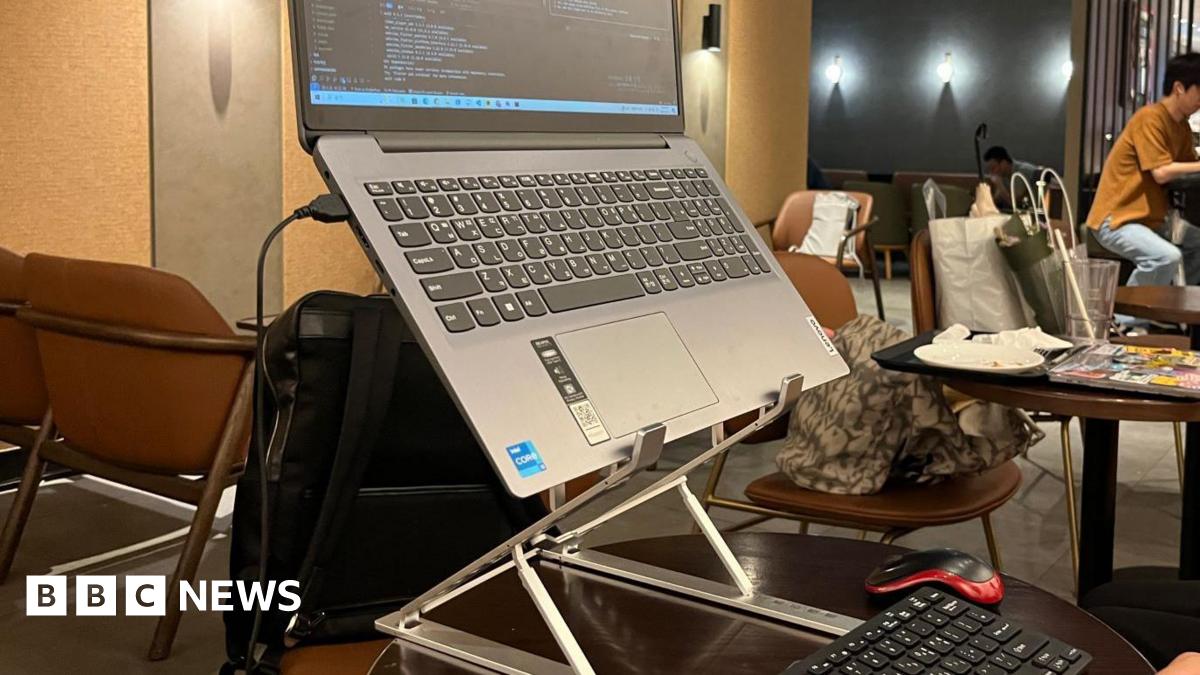South Korea's Cafe Culture: Navigating The Challenges Of Cagongjok

Welcome to your ultimate source for breaking news, trending updates, and in-depth stories from around the world. Whether it's politics, technology, entertainment, sports, or lifestyle, we bring you real-time updates that keep you informed and ahead of the curve.
Our team works tirelessly to ensure you never miss a moment. From the latest developments in global events to the most talked-about topics on social media, our news platform is designed to deliver accurate and timely information, all in one place.
Stay in the know and join thousands of readers who trust us for reliable, up-to-date content. Explore our expertly curated articles and dive deeper into the stories that matter to you. Visit Best Website now and be part of the conversation. Don't miss out on the headlines that shape our world!
Table of Contents
South Korea's Cafe Culture: Navigating the Challenges of Cagongjok
South Korea boasts a vibrant cafe culture, with coffee shops seemingly on every corner, offering more than just a caffeine fix. These spaces serve as vital social hubs, study spots, and even temporary offices. However, beneath the surface of this bustling scene lies a significant challenge: cagongjok (카공족), or "cafe workers." This burgeoning trend presents both opportunities and difficulties for cafe owners and society at large.
What is Cagongjok?
Cagongjok refers to individuals who utilize cafes as their primary workspace, often for extended periods. While some may purchase a single beverage, many cagongjok remain for hours, sometimes occupying prime seating and potentially impacting the cafe's overall revenue stream. This phenomenon isn't unique to South Korea, but its prevalence here, fueled by a competitive job market and a pervasive culture of long working hours, has made it a significant social and economic issue.
The Two Sides of the Coin:
The rise of cagongjok presents a double-edged sword for cafe owners. On one hand, they represent a steady stream of potential customers, even if their individual spending might be limited. A cafe filled with diligently working individuals can project a positive and productive atmosphere, attracting other customers.
However, the downsides are equally significant:
- Limited Seating and Turnover: Cagongjok often occupy tables for extended periods, reducing the number of seats available for customers who intend to make larger purchases. This directly impacts revenue and can lead to frustrated customers.
- Increased Operational Costs: The extended use of space by cagongjok increases the cafe's operational costs without necessarily generating commensurate revenue. Cleaning and maintenance needs also increase.
- Potential for Conflict: Some cafes may experience tension between cagongjok and paying customers, leading to potential conflicts and negative reviews.
Cafe Strategies to Manage Cagongjok:
Many cafes are implementing strategies to address the cagongjok phenomenon:
- Time Limits: Some cafes introduce time limits for customers, especially during peak hours. This approach ensures fair access to seating for all customers.
- Minimum Purchase Requirements: Requiring a minimum purchase after a certain duration encourages customers to spend more and helps offset operational costs.
- Designated Workspace Areas: Creating dedicated coworking spaces within the cafe can cater to cagongjok while maintaining a balance with other customers. This could even be a revenue stream in itself.
- Technological Solutions: Utilizing reservation systems or apps could help optimize seating and manage customer flow.
The Broader Societal Implications:
The cagongjok phenomenon reflects larger societal issues in South Korea, including the pressure of intense competition and the lack of affordable and accessible co-working spaces. Addressing these underlying problems is crucial for creating a sustainable solution.
Looking Ahead:
The future of South Korea's cafe culture and its relationship with cagongjok remains to be seen. Finding a balance that satisfies both cafe owners and individuals seeking affordable workspaces is a crucial challenge that requires innovative solutions and a broader societal conversation. Finding a balance between accommodating the needs of cagongjok and maintaining profitability for businesses will be key to the continued success of South Korea’s beloved cafe culture. The implementation of creative strategies and a deeper understanding of the underlying societal pressures are vital steps towards a more sustainable future for both businesses and individuals. Are there any strategies you think cafes should adopt to better manage this trend? Let us know in the comments below!

Thank you for visiting our website, your trusted source for the latest updates and in-depth coverage on South Korea's Cafe Culture: Navigating The Challenges Of Cagongjok. We're committed to keeping you informed with timely and accurate information to meet your curiosity and needs.
If you have any questions, suggestions, or feedback, we'd love to hear from you. Your insights are valuable to us and help us improve to serve you better. Feel free to reach out through our contact page.
Don't forget to bookmark our website and check back regularly for the latest headlines and trending topics. See you next time, and thank you for being part of our growing community!
Featured Posts
-
 Osasuna Derrota Al Valencia 1 0 Resumen Y Cronica Del Partido
Aug 25, 2025
Osasuna Derrota Al Valencia 1 0 Resumen Y Cronica Del Partido
Aug 25, 2025 -
 Pentagon Removes Intelligence Chief Following Iran Attack Assessment
Aug 25, 2025
Pentagon Removes Intelligence Chief Following Iran Attack Assessment
Aug 25, 2025 -
 Find Your Dream Prom Dress Nigerian Styles For Us Teens
Aug 25, 2025
Find Your Dream Prom Dress Nigerian Styles For Us Teens
Aug 25, 2025 -
 Honest Talk Rory Mc Ilroy On The Challenges Of Ryder Cup Team Unity
Aug 25, 2025
Honest Talk Rory Mc Ilroy On The Challenges Of Ryder Cup Team Unity
Aug 25, 2025 -
 Chiefs Acquire Defensive Tackle Derrick Nnadi In Trade With Jets
Aug 25, 2025
Chiefs Acquire Defensive Tackle Derrick Nnadi In Trade With Jets
Aug 25, 2025
Latest Posts
-
 New York Bus Crash Kills Five Injures Dozens Officials Release Details
Aug 25, 2025
New York Bus Crash Kills Five Injures Dozens Officials Release Details
Aug 25, 2025 -
 The Allure Of K Pop Demon Hunters A Look Into Childrens Fandom
Aug 25, 2025
The Allure Of K Pop Demon Hunters A Look Into Childrens Fandom
Aug 25, 2025 -
 La Liga Preview Villarreal Vs Girona Team News And Prediction
Aug 25, 2025
La Liga Preview Villarreal Vs Girona Team News And Prediction
Aug 25, 2025 -
 Nfl Trade Chiefs Get Nnadi Jets Receive Conditional 2027 Draft Pick
Aug 25, 2025
Nfl Trade Chiefs Get Nnadi Jets Receive Conditional 2027 Draft Pick
Aug 25, 2025 -
 Three Years Later Phillies And Mets Renew Rivalry At Field Of Dreams
Aug 25, 2025
Three Years Later Phillies And Mets Renew Rivalry At Field Of Dreams
Aug 25, 2025
